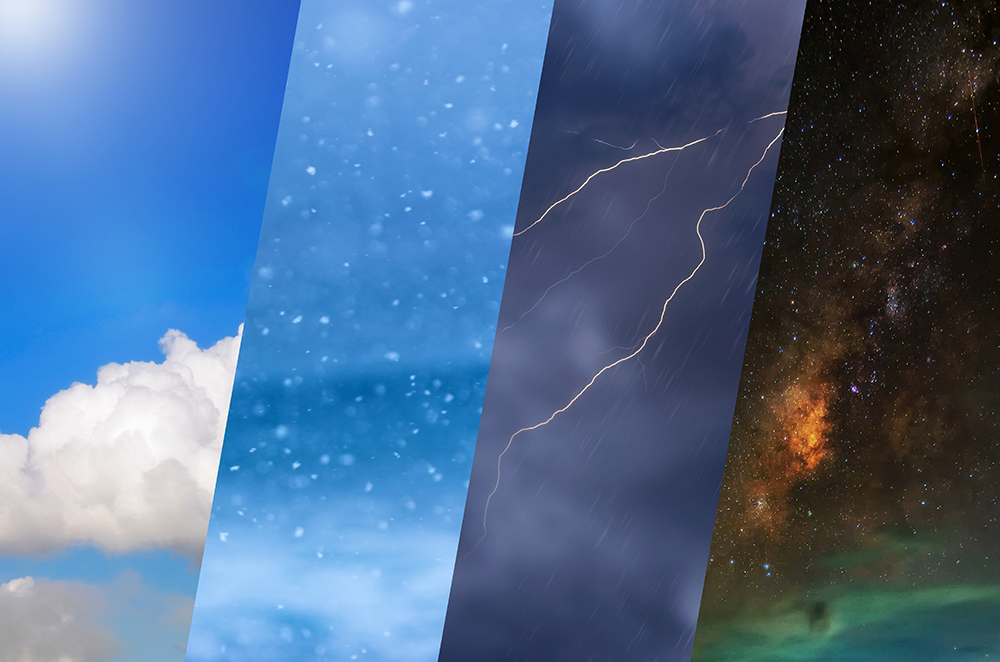Weather
By Dan Skeldon
The fall foliage has just started to show its seasonal color. Candy collection efforts for Halloween night are still in the planning stages. Yet there are already two harbingers for the coming winter season: the Christmas decorations twinkling in area stores, and meteorologists buried in a blizzard of requests for snow predictions for this winter.
Yes, despite the occasional egg on a forecaster’s face when tomorrow’s forecast goes awry, there’s actually a growing demand for us to cook up a seasonal forecast and look four months into the future and try to predict just how cold and snowy February could be. Perhaps it’s a credit to the science of meteorology and the advancements that have been made in weather forecasting, even though we’re still the butt of many jokes. Yes, I’ve heard the one that says I can be wrong “all the time” and not get fired. True to a small degree, but I actually think daily forecasts are now right “most of the time.”
Winter forecasts, however, are another story. Find me one forecast that said snow last winter would be as scarce as a beachfront parking spot in the middle of summer. To my knowledge, there wasn’t any, and that’s a shame. After all, a vast amount of time and energy are put into most winter outlooks. Personally, I’ve spent hours designing the winter blueprint I thought Mother Nature would follow, only to have it deviate from the plans right out of the gate.
Why? Well, there are so many variables that can impact how cold and snowy a winter is. Let’s name a few. Water temperatures off of the East Coast can impact the track and strength of coastal storms. The strength and position of a high pressure over Greenland is crucial, and can help form a “block” that can create a meteorological traffic jam that makes things repeatedly cold and snowy or warm and dry. The snow cover over Canada and even Siberia can dictate how much cold air is available to come down throughout the winter. And the water temperatures thousands of miles away in the central Pacific Ocean, which help determine if we’re in a La Nina or El Nino cycle, can influence the storm track and amount of moisture around to fall as rain or snow.
Now if a forecaster can correctly predict all of those variables over thousands of miles of real estate from the Pacific Ocean to Siberia to Greenland to the waters off the East Coast months in advance, then the winter forecast will be a success. If one thing is wrong, the entire forecast can derail. Ay, there’s the rub. It’s all interconnected and complex, and therefore leaves ample room for error.

While my distaste for a seasonal winter outlook grows by the season, I don’t feel the same about all long range forecasting efforts. Meteorologists have made enormous strides in accurately forecasting the number of tropical systems during hurricane season, and whether that season would be quiet, average, active, or in the case of 2020, hyperactive. But predicting where the storms will strike months in advance is still impossible. Yet the publicity the hurricane forecast generates at the beginning of the season serves a purpose as well, and often encourages early preparation and awareness.
I hardly think the same thing can be said about the winter forecast. If a snowier than average winter is predicted, is there a rush on snow blowers and rock salt? Quite the contrary, as that rush comes after the first big storm, not months before it. More than anything else, I think the primary purpose a winter outlook serves is a conversation piece. Not that I mind any conversation that has to do with weather. Nor do I mind the challenge of trying to predict months into the future. But is it worth it?
Furthermore, there’s an issue with perception of a winter forecast. Let’s say we get one blockbuster blizzard in early December, one that drops two feet (24″) of snow. Right there, that’s a snowier than average season, as our average snowfall for an entire winter in South Jersey is around 17″. But let’s also say that the rest of the winter is warm and snowless. In the history books, it’s a snowy winter. If a snowy winter was forecast, it would certainly qualify. But to most of us that lived through it, it was one day of snow and three months of mild weather.
Given the inherent uncertainty, I think the better approach to a winter outlook is a monthly forecast for December through March, issued just before the start of each winter month. There’s certainly more skill in predicting 30-day temperature and snowfall trends than there is accurately predicting 120 days ahead. Look for those monthly prognostications this coming season, and I’ll grade each prediction along the way.
In the meantime, we can focus on the fall, take in the foliage, and sure up that Halloween costume idea. If you’re going as a meteorologist, don’t forget the green screen, a weather map, and a little egg for your face.
Meteorologist Dan Skeldon has a degree in meteorology from Cornell University. He has forecasted the weather in South Jersey for the last 18 years, first on the former television station NBC40 and then on Longport Media radio. Dan has earned the American Meteorological Society Seal of Approval for Broadcast Meteorologists, and now does television broadcasts on WFMZ-TV in Pennsylvania’s Lehigh Valley.










